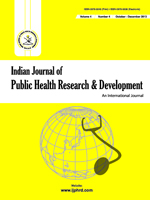Assessment of Bacterial Pigments as Textile Colorants
Subscribe/Renew Journal
The textile industry is considered the second most polluting industry in the world. Synthetic nonbiodegradable petroleum-based dyes and toxic mordants play a major part in this pollution. Almost 20% of global water pollution has been associated with the textile dyeing practices. These controversies with the current environmental regulations, lead to a great demand for natural colors in food, pharmaceuticals, cosmetics, textiles and in the printing dye industry.
Recently, microbial pigments have been shown to be a promising alternative not only to synthetic dyes, but also to other biopigments derived from vegetables or animals as they are viewed as natural, non-toxic, have no seasonal production issues, offer excellent productivity, economical and most important they are ecofriendly.
An environmental screening of 77 samples was carried out for pigment production. Pigmented bacteria represented 55 (68%) of total samples with the highest percentage of pigmented bacteria found in air samples and the lowest percentage from water samples. Five potential pigmented isolates were chosen for pigment extraction and used for dyeing three types of fabrics - nylon, wool, and polyester. Furthermore, stability of dyes following treatment with acid, alkaline and detergents was studied to investigate the retention of dyes. Bacterial pigments in some unmordanted fabrics were retained 100% in cases of acid treatments while a small amount of discoloration was observed when subjected to alkali, or cold water and detergent. Apart from colorant, Serratia marcescens pigments demonstrated antibacterial activity against gram positive bacteria.
The current study demonstrated that coloring ability of the natural dyes can be compared to that of the synthetic dyes. Furthermore, these biochromes are also able to produce various shades similar to those of the synthetic dyes and express variable resistance to treatment with acid, alkaline and detergents.
Keywords

Abstract Views: 1149

PDF Views: 0



